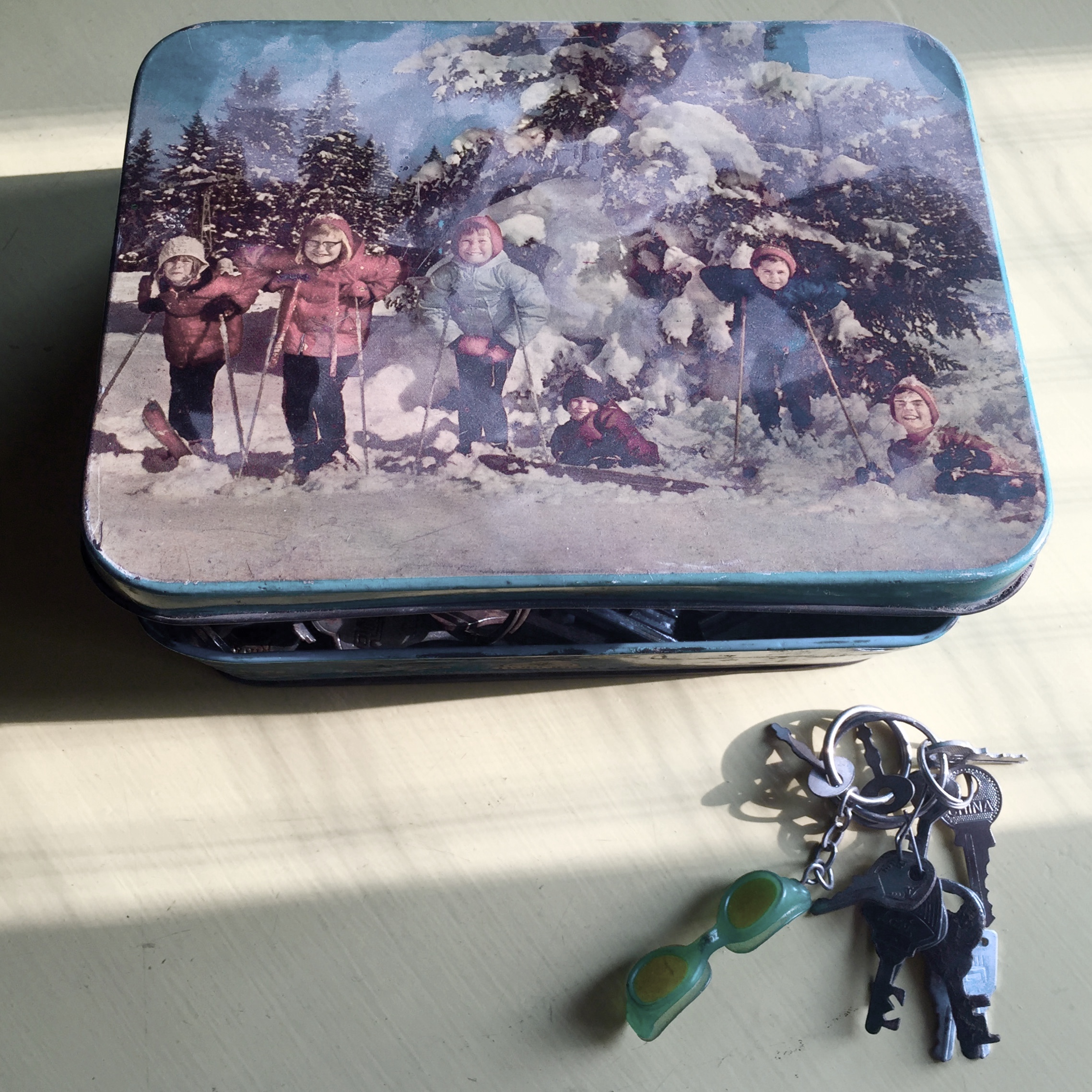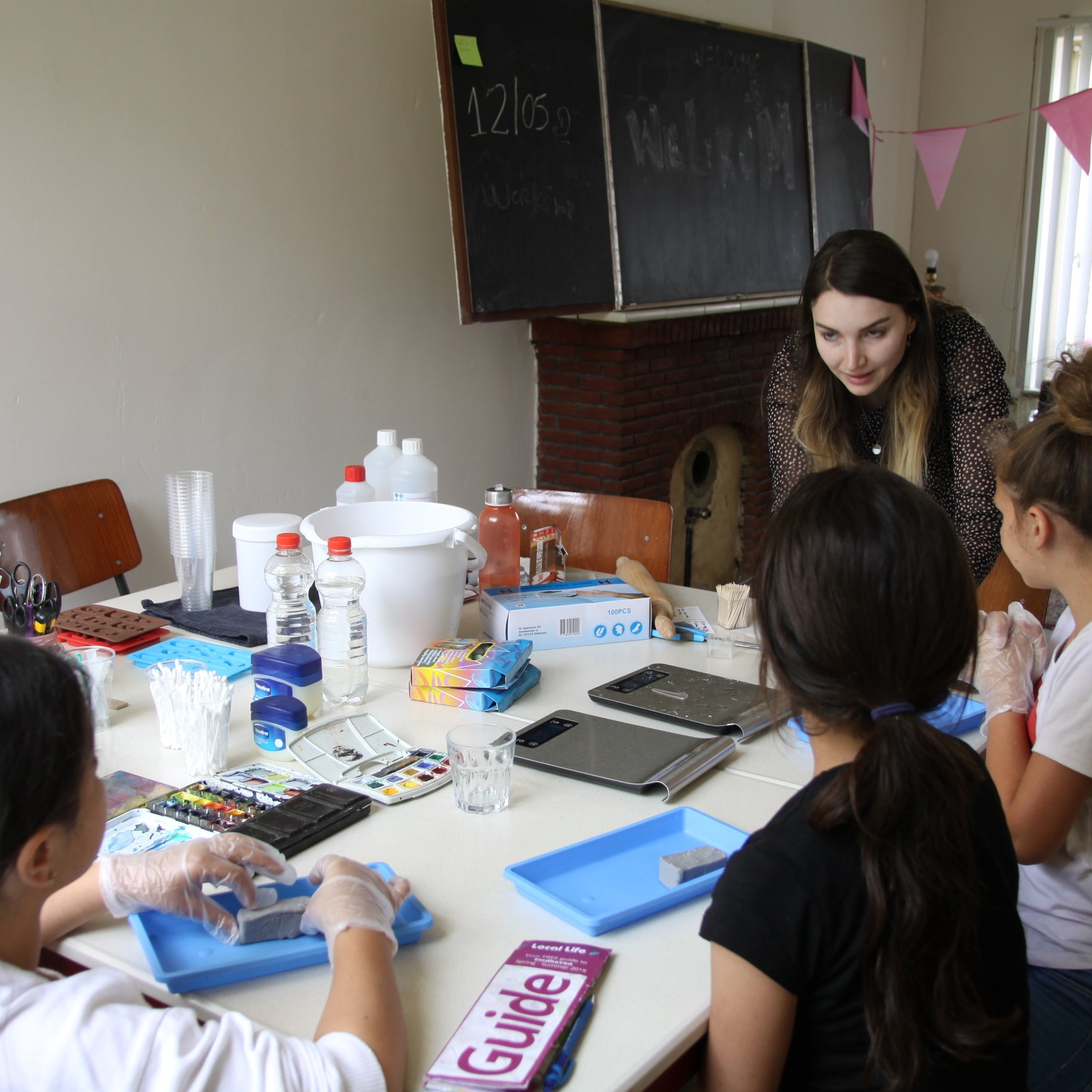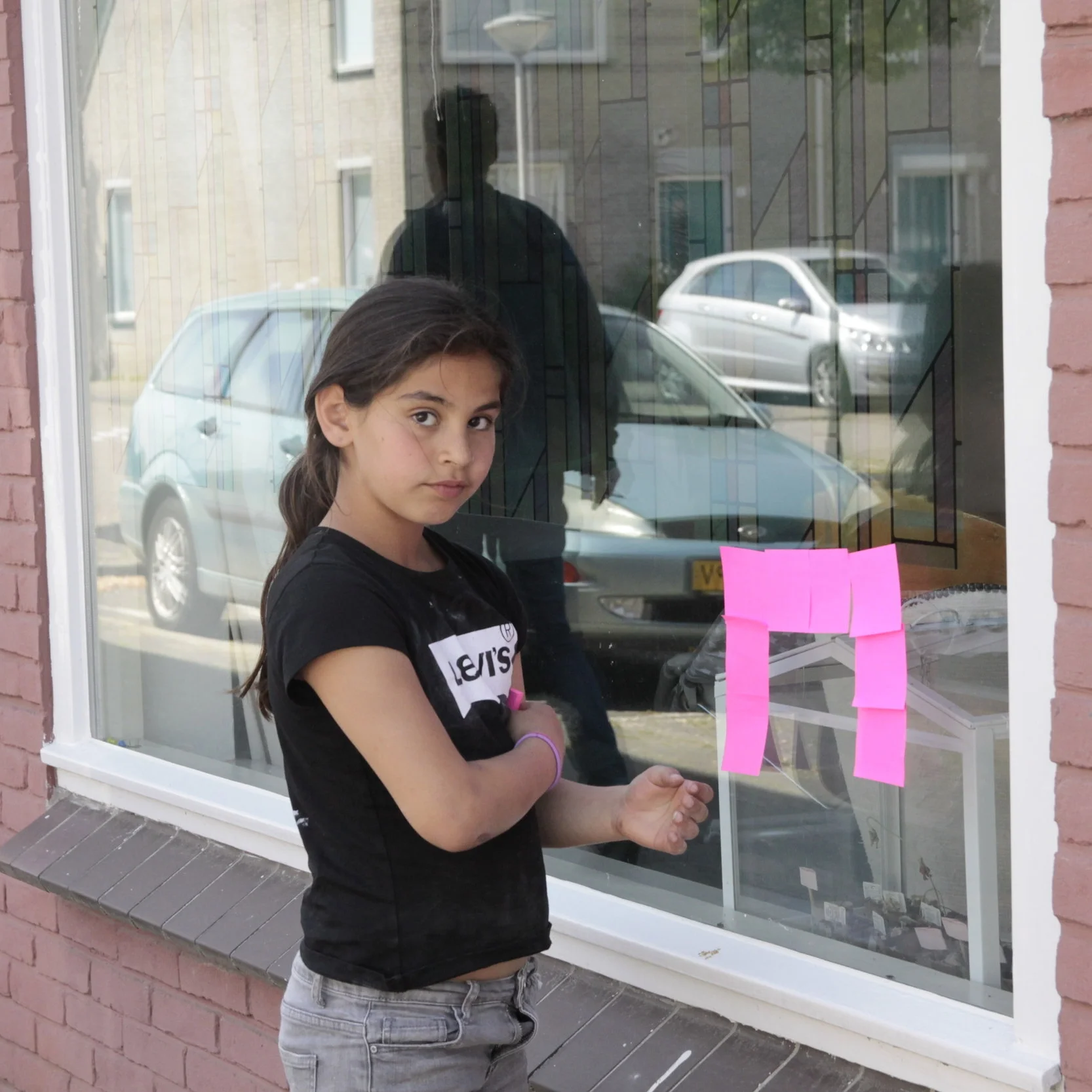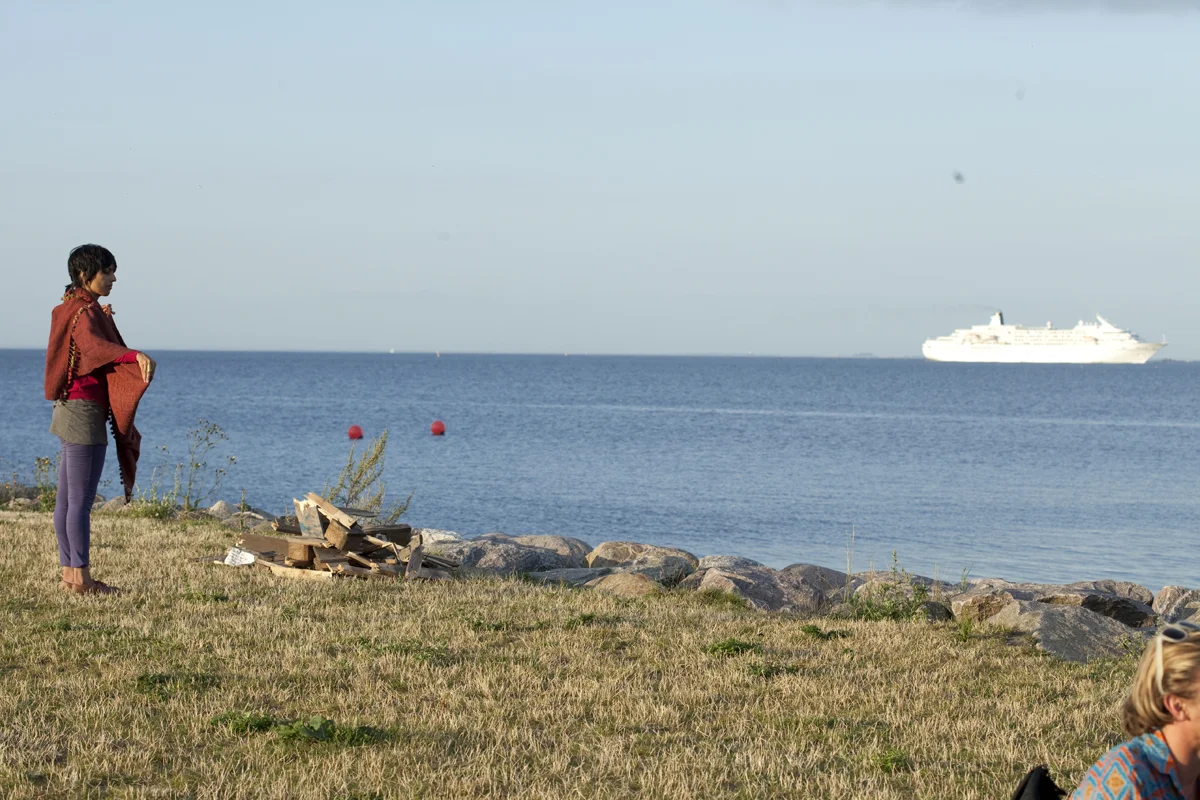WHILE WE WALK

An artistic-research based
Performance Project in Public Space
While We Walk (2017) is an ongoing series of ‘walking conversations’ with women from different ages, cultures, classes, nationalities and professions. While we walk - we talk about home, belonging and the sense of ownership citizens have towards their cities and public space. To date, Nikita has had the joy of walking&talking with women from Utrecht, Tilburg, Sofia and New Delhi.
Over the years, the collective knowledge and impressions of these walks have contributed towards multiple aesthetic manifestations - writings, photoessays, a soundscape, a performance and an installation. Each time the sharing of memories, stories and anecdotes have revealed the different relationships people have with the city they live in.
Artist’s Note
“To decode the intricate relationship between gender and the city, I embarked on this journey inspired by the most simple and neutral act performed in a public space - walking. The ‘walking conversations’ were performed with varied women in different neighbourhoods of various cities during different hours of day and night, which gradually shaped into this ongoing photo series. During these conversations I realised that ‘public’ in public space is not a coherent unified group but a blend of different socio-economic and cultural subsets, further divided by age and gender. And each part of this diverse society relates to public space in a different and complex way.”
#whilewewalked with Maryam on the streets of Tilburg on a cold November night she answered in her reverie, when asked what meaning does ‘home’ have for her, “I belong nowhere and to no one. When a circular light bathes me in its light and watches over me, I feel I am home. I feel safe. I believe this circle of light has been part of my subconscious for many lifetimes”.
An artist and a dreamer, Maryam comes from Iran.
#whilewewalked with Arzoo she told us about how she and her husband came in search of work to the city from a small village in Bengal.
When asked what does home mean to you, she looked ruefully and said, “Ghar to raheeson ke hote hai didi, humare to sirf jhopada hota hai. Tinka-Tinka jod kar to mahal nahi na banta, sirf chidiya ka ghosla ban pata hai.”
{homes are for the rich, my sister, we just have shacks. By collecting straws you can’t make palaces, you can only make a nest of a bird.}
#whilewewalked with Vitória one late October afternoon, the autumn leaves had started to fall. We walked talking about her home is Brazil and her understanding of the new customs and festivals here in Holland.
After an hour, when our conversation drained out, we had a long span of silence with just the sound of rustling leaves to accompany us. After what felt like a long long time, she said, “me and my sister have a tattoo of a bird and our mother of a nest. Our coming together is my perfect home.”
#whilewewalked with Cristine she looked at the street full of rush hour traffic and said, “I like the sound of cities and cars. It makes me feel alive.”
Slowly, we made our way to the quieter lanes of Piushaven and stood looking at the flowing stream of water. After a while, she turned around, looked at my side, smiled her bright smile and said, “I love to the sound of chirping birds. The sounds of nature can warm your heart, no.” She reflected, “I guess, I like both. I guess, I am both - the chaos and the calm.”
#whilewewalked with Rachel across the city, we realized, she knew the city like the back of her hand. Each turn, each street, each shop we walked by, came with a string of stories and anecdotes.
As we were passing by one of the most popular restaurant of Tilburg, De Spaarbank, she looked up at the second floor of the establishment and said gleefully, “When I was growing up, this was a house to family of eight children. On the second floor, was a bright pink room of my friend where we roller-skated all evening long. It was magnificent, something I will always cherish.”
#whilewewalked with Priya during the peak hours in the evening near the Gurgaon-Delhi border we could hardly hear each other over the sounds of traffic and roadside vendors. Priya comes from a small village near Bareilly and has been working for the past five years in Udyog Vihar in a clothing factory. She is a single mother to two beautiful young children.
I asked her, do you like the city?
She said, “For me the city is a place of independence. I feel like I am equal to a man. I can work, raise my kids well, buy things I always wanted. If I would do the same job in my village, people will talk, whisper behind my back, spread rumours that I have an affair with a boy, I neglect my kids and more. But here the same work is respected. I send back some savings at home, my father is proud of me. I am like his son. For me this place has become a place of privilege.”
#whilewewalked with Noortje on a warm February afternoon in a park, she said “This is my first outing in a park in Delhi. In India, my interaction with public space is minimal. It’s very transactional, unlike my engagement in public space in Holland. Here, I move from point A to point B - I don’t loiter or attempt a longer route. Maybe, I am more cautious here because people have put the fear in my mind.”
Noortje is a dance professional & photographer from Holland and has been to India three times.
#whilewewalked with Mrs.Dixit on a hot March evening in a park next to her apartment with her voice laden with nostalgia she uttered, “Once upon a time, Delhi had the voice of sparrows and bulbuls. The progress has killed most of them. Now, what’s left is this monotonous background score of construction work and traffic.”
#whilewewalked with Jayshree, she reminisced, “My mother’s house is still what triggers the memory of home for me. She passed away six years ago and my sister & her family have moved into her house. My sister tore down the 70 year old architecture and a new triple floored construction was built. On the back of the house, she has kept the old wall intact. The wall has three jharokhas (windows). Every time I visit, I look through them. I can see through them - my mother, the memory of my childhood and scenes of a city long gone.”
TRACING HOME

A Multi-Media Installation Work (2016). Commissioned by KrishnaKriti Art Gallery
Coming from a place of safekeeping and nostalgia, Tracing Home explores the idea of belonging through everyday objects.
Mapping my childhood memories of the blueprint of the five houses I grew up in, I recreated the image of my middle class home.
“Jiti ghisegi, bitti naram howegi”, my nani (maternal grandmother) advised when I told her my new kohlapuri leather chappals had bruised the sole of my feet.
Since then, they have walked many miles, soaking in the sweat and grime of the wet Bombay streets, traversing the potholed bylanes of Guodoliya & Vishwanath Gali, stained by the red earth on the narrow walkway to my home. They grow softer with each step, tender with daily expeditions, layering itself with various memories, softening and humbling itself with years of experience.
Banarasi. A word that triggers countless memories – paans, bylanes, Gangaji, Ramleelas but especially my nani and her collection of Benarasi silk saris.
This sari of my nani was passed down to my mother, who never wore it saying it was too bright for her taste. While cleaning during Diwali, my mother took it out along with the rest of her stunning trousseau for a daylong ‘hawa dikhana’. The beautiful fabrics spread across her bed were folded and safely tucked in again by the evening. Those were my favorite Diwali cleaning days. Touching the rich textures and letting it slip in my little clammy hands in awe and wonderment, I would promise myself every time, that one day I will wear them - like mother, like daughter. And, on my engagement day, this particular one, I did.
As kids, my brother and I often dashed to answer doorbells around the festival of Diwali. My brother liked cashews and I liked tin boxes that carried mithais (sweets). Once the sweets were finished, these boxes stored my crayons, pieces from my kitchen set and many such treasured belongings. On a recent visit to my mother’s place, I saw my old box now housing a bunch of keys to forgotten locks.
In my house, this image wasn't an unusual sight. The toothpaste from the bathroom met the belan from the kitchen at the fag end of its life. Whatever was left was squeezed out of the tube and somehow it was always magically sufficient for the family of four to brush from.
'Mitvyayi bano' remarked my mother ever so often while I frowned upon this practice in my teens. Years later, I follow the same ritual, attempting to keep the promise of being frugal.
Who would have thought a boring bank planner could withhold such exquisite writings. How wonderful is its fate to not be scribbled with procrastinated to-do lists and anxiously written meeting schedules. Imprinted with love, poetry and fragrance of history, this one houses itself in my husband's grandfather's home.
So my first teddy wasn't the Archie’s kind - fluffy, soft, baby pink with a brown nose. Mine was this technicolour one without a nose. He had always been without a nose, it was my elder brother's hand-me-down toy and I nurtured a love-hate relationship with him.
Then as the brand new pink Barbie made its way into my life, it lay deep inside my toy basket, hidden beneath the new additions. The watch, again a hand-me-down from my mother, was my first watch. It lacked in design to cater to a teenage girl. My classmates wore the bright coloured, big dial watches whereas I wore the Mary Jane, so-not-cool one. My mother in both cases argued, "It serves the purpose".
Frankly, they both did, they did stand the test of time and are few of my most treasured possessions.
To find traces of your parents in the yesteryear photographs. From monochrome to sepia, I can map their advancing years. I look closely and find hints of myself - the narrow chin, the thin hair and the long fingers.
The back of these prints carry the stories of the images- a long lost friend’s vacation in Sikkim, the news of the arrival of a newborn of a distant cousin and my 19 year-old mother’s description of her first solo trip.
HET VERHALENHUIS

A Participatory Art Project - in collaboration with Anja Radakovic & Vitoria Aquino. Commissioned by Tante Netty (2018)
Het Verhalenhuis or The Story House was a participatory art project stationed at Newtonstraat,6 in the small and diverse neighbourhood of Woensel West. In collaboration with international artists Anja Radakovic, Vitoria Aquino and organization Tante Netty, I delved further in my inquiries to decipher the ‘Idea of Home’.
The six week-long project aimed to bring to life the stories of ‘home’ and ‘belonging’ of the community of Woensel West in Eindhoven, Netherlands.
By the process of engaging in endless conversations over coffees and dinners, making spontaneous public interventions and by collecting a box full of memories, dreams, images and objects, we together built the house of stories!
WALL OF BABEL

A Collaborative Participatory Word-wall. by Nikita Maheshwary & Premjish Achari (2018)
The Wall of Babel was conceptualised during the second edition of Future Collaboration and was exhibited as a part of group exhibition ‘Workers and Farmers: The Panorama of Resistance (Prelude)’ in April 2018.
Artists’ Note:
“Through our series of exchanges of words or what we call as “utterances”, we both attempt a new way of collaborative writing, thinking about the trauma of the displaced. We would like you to join us and expand the network of words and create a wall of utterances and expressions from different languages, contexts and experiences. Let us raise a Wall of Babel, instead of a lofty tower, a memorial for resistance in our scattered languages.”
- Nikita Maheshwary & Premjish Achari
SUFI SCIENCE PROJECT

A series of 21 performances
in public space & alternative spaces (2015). Copenhagen, Denmark.
Sufi Science was a live-art installation project. During the summers of 2015, as artists in residence, a group of 10 Indian and Danish artists performed 21 shows at various public spaces across the city of Copenhagen.
























































